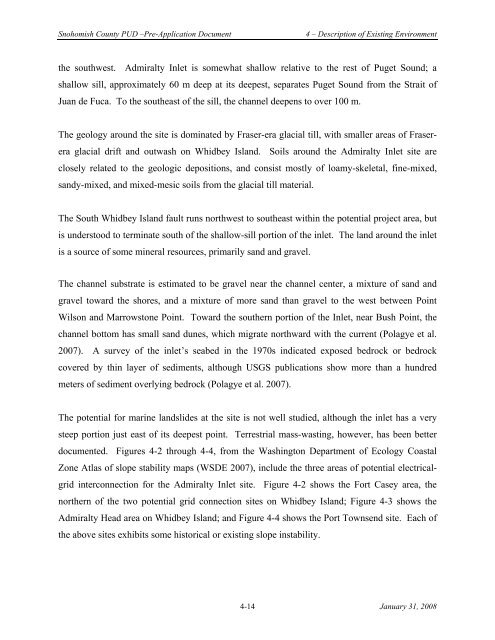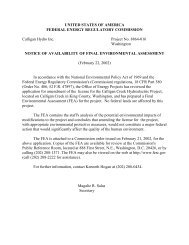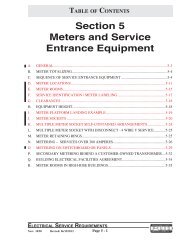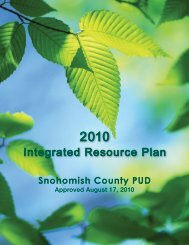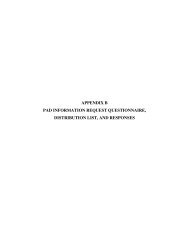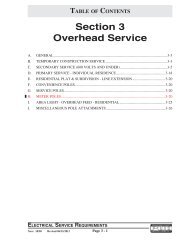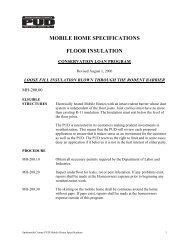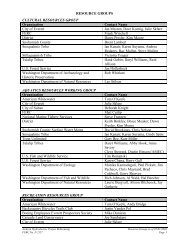Tidal_PAD_V1_Sec4.pdf - Snohomish County PUD
Tidal_PAD_V1_Sec4.pdf - Snohomish County PUD
Tidal_PAD_V1_Sec4.pdf - Snohomish County PUD
Create successful ePaper yourself
Turn your PDF publications into a flip-book with our unique Google optimized e-Paper software.
<strong>Snohomish</strong> <strong>County</strong> <strong>PUD</strong> –Pre-Application Document<br />
4 – Description of Existing Environment<br />
the southwest. Admiralty Inlet is somewhat shallow relative to the rest of Puget Sound; a<br />
shallow sill, approximately 60 m deep at its deepest, separates Puget Sound from the Strait of<br />
Juan de Fuca. To the southeast of the sill, the channel deepens to over 100 m.<br />
The geology around the site is dominated by Fraser-era glacial till, with smaller areas of Fraser-<br />
glacial drift and outwash on Whidbey Island. Soils around the Admiralty Inlet site are<br />
era<br />
closely related to the geologic depositions, and consist mostly of loamy-skeletal, fine-mixed,<br />
sandy-mixed, and mixed-mesic soils from the glacial till material.<br />
The South Whidbey Island fault runs northwest to southeast within the potential project area, but<br />
is understood to terminate south of the shallow-sill portion of the inlet. The land around the inlet<br />
is a source of some mineral resources, primarily sand and gravel.<br />
The channel substrate is estimated to be gravel near the channel center, a mixture of sand and<br />
gravel toward the shores, and a mixture of more sand than gravel to the west between Point<br />
Wilson and Marrowstone Point. Toward the southern portion of the Inlet, near Bush Point, the<br />
channel bottom has small sand dunes, which migrate northward with the current (Polagye et al.<br />
2007). A survey of the inlet’s seabed in the 1970s indicated exposed bedrock or bedrock<br />
covered by thin layer of sediments, although USGS publications show more than a hundred<br />
meters of sediment overlying bedrock (Polagye et al. 2007).<br />
The potential for marine landslides at the site is not well studied, although the inlet has a very<br />
steep portion just east of its deepest point. Terrestrial mass-wasting, however, has been better<br />
documented. Figures 4-2 through 4-4, from the Washington Department of Ecology Coastal<br />
Zone Atlas of slope stability maps (WSDE 2007), include the three areas of potential electricalgrid<br />
interconnection for the Admiralty Inlet site. Figure 4-2 shows the Fort Casey area, the<br />
northern of the two potential grid connection sites on Whidbey Island; Figure 4-3 shows the<br />
Admiralty Head area on Whidbey Island; and Figure 4-4 shows the Port Townsend site. Each of<br />
the above sites exhibits some historical or existing slope instability.<br />
4-14 January 31, 2008


